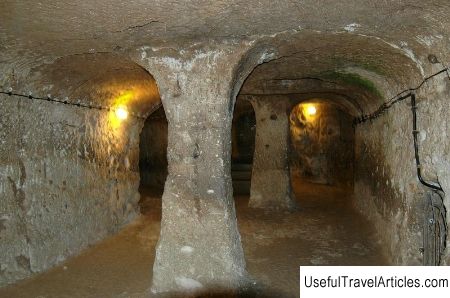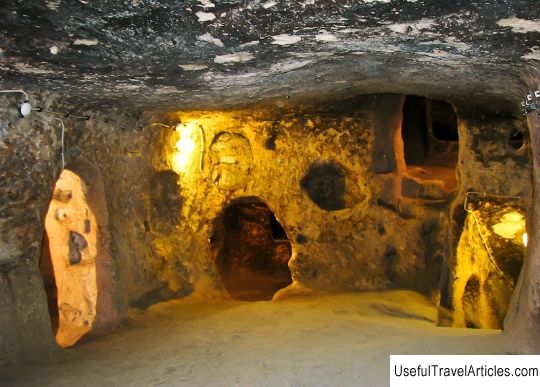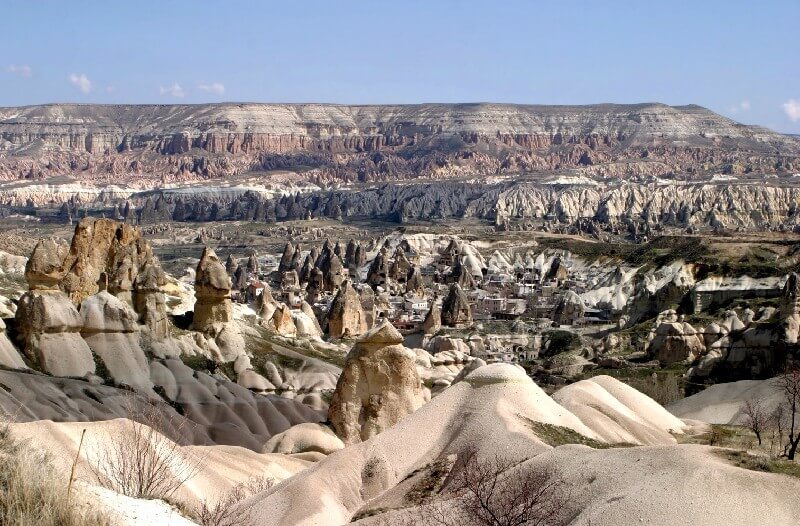Underground cities of Cappadocia description and photos - Turkey: Cappadocia
Rating: 7,7/10 (490 votes) 
Underground cities of Cappadocia description and photos - Turkey: Cappadocia. Detailed information about the attraction. Description, photos and a map showing the nearest significant objects. Photo and descriptionNone of the scientists can determine the exact date of the construction of these unique structures, archaeologists lean towards the period of the 16-12 centuries BC. The underground cities of Cappadocia were used for the needs of the army of Alexander the Great, here the Hittites found shelter from Thracian soldiers, Christians from Roman troops, and also residents of nearby territories fled from the invasion of Arabs. Cities are structures not on the ground, but underground. There are about two hundred of them and each is distinguished by its uniqueness. You can go down to the city using a narrow tunnel. Each such entrance was carefully camouflaged and closed with large cobblestones. Underground cities are living quarters underground with many rooms, bedrooms, kitchens, food storage, as well as schools, chapels, churches. There are rooms with a row of columns that divide it into several parts. Long corridors and tunnels were the connecting link for them. The city has lower floors, which can be accessed by steps that are carved out of the rock. Even below there are ventilation shafts that supply air to the city, which border on groundwater, from which they drew water like from a well. Cities began to be explored back in the 30s of the 20th century. They have their own names Ozkonak, Mazykuyu, Tatlarin and others. Now only two cities are open to tourists - Derenkuyu and Kaymakli. During the excavations, a large number of household items were found that belong to different time periods. Scientists' calculations showed that the underground cities of Cappadocia could accommodate about 50 thousand people and livestock.       We also recommend reading National Museum of Modern Art description and photos - Japan: Tokyo Topic: Underground cities of Cappadocia description and photos - Turkey: Cappadocia. |




